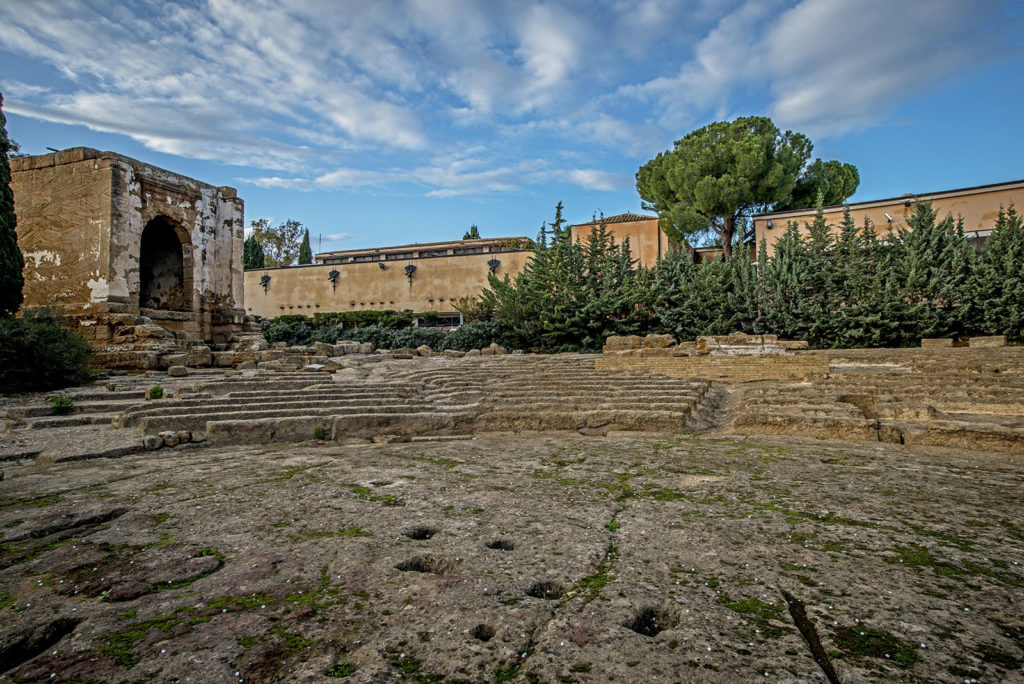
In 2016, after almost five centuries of research, the Theatre of Agrigentum was found in the south-east corner of the forum, after some accounts of the historian Tommaso Fazello had certified its presence, describing it as already heavily stripped in the 16th century.
A fundamental element of transition from Greek to Roman culture, the theatre was a place of entertainment par excellence for citizens, where they attended games, fights and some religious festivals.
The structure of the theatre in Agrigentum covered a little more than half of the front of the square on which it was located, and even today we can still see how it faced the hill with the surrounding temples, a wonderful background for the entertainment of the Agrigentines and a source of pride for the whole city. From the materials used for the construction, we can date the structure back to the beginning of the 2nd century BC.
On the western side, some
substructures
were found to support the steps where the spectators would be seated, while nothing is left of the orchestra or scene. The culture of theater and entertainment was always very alive in Sicily, to the more recent times: the link with the theater of the ancient Greeks continues to live, every year, the
greek theater in Syracuse
, while
the Opera dei Pupi
, a form of much more modern theater, was declared Intangible Heritage of Humanity.